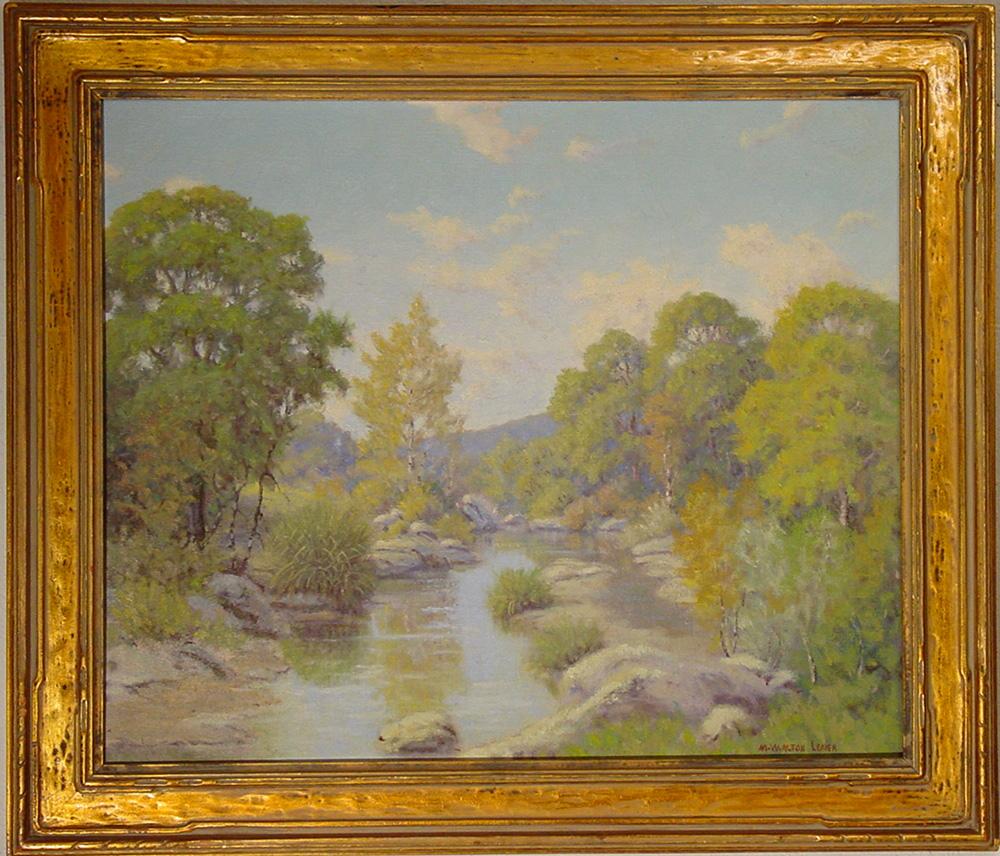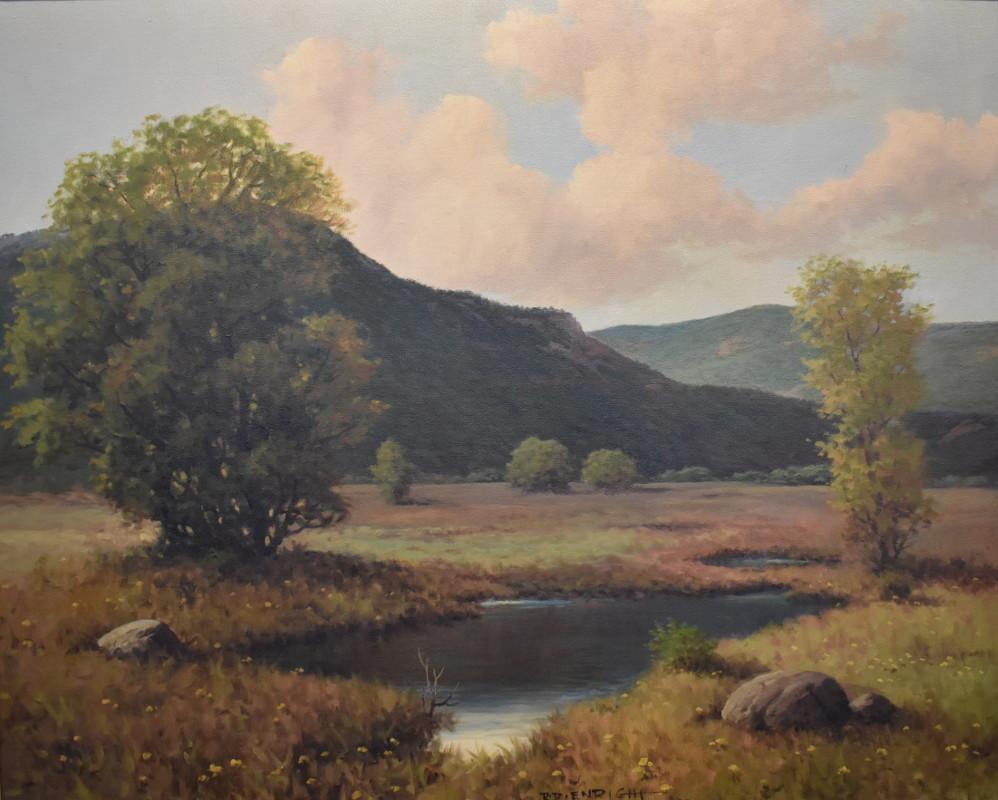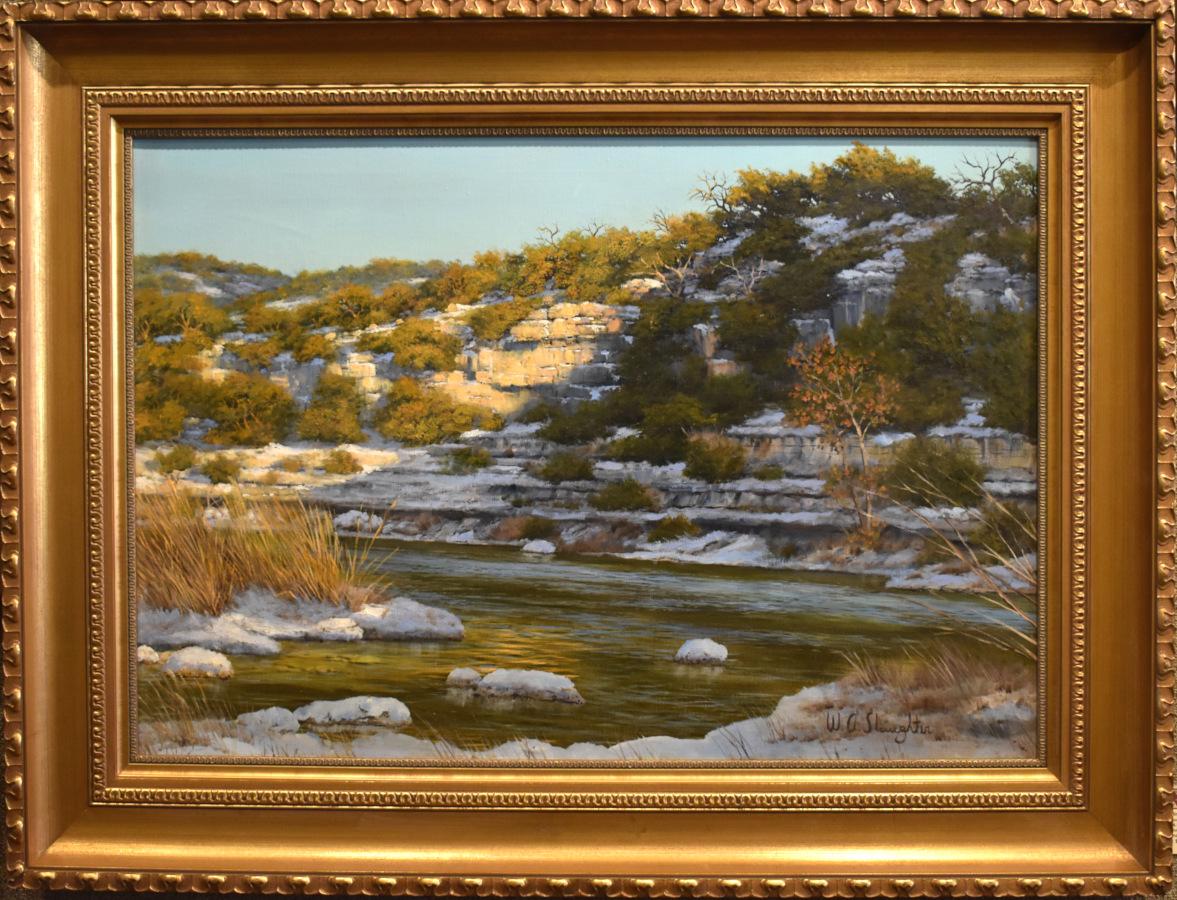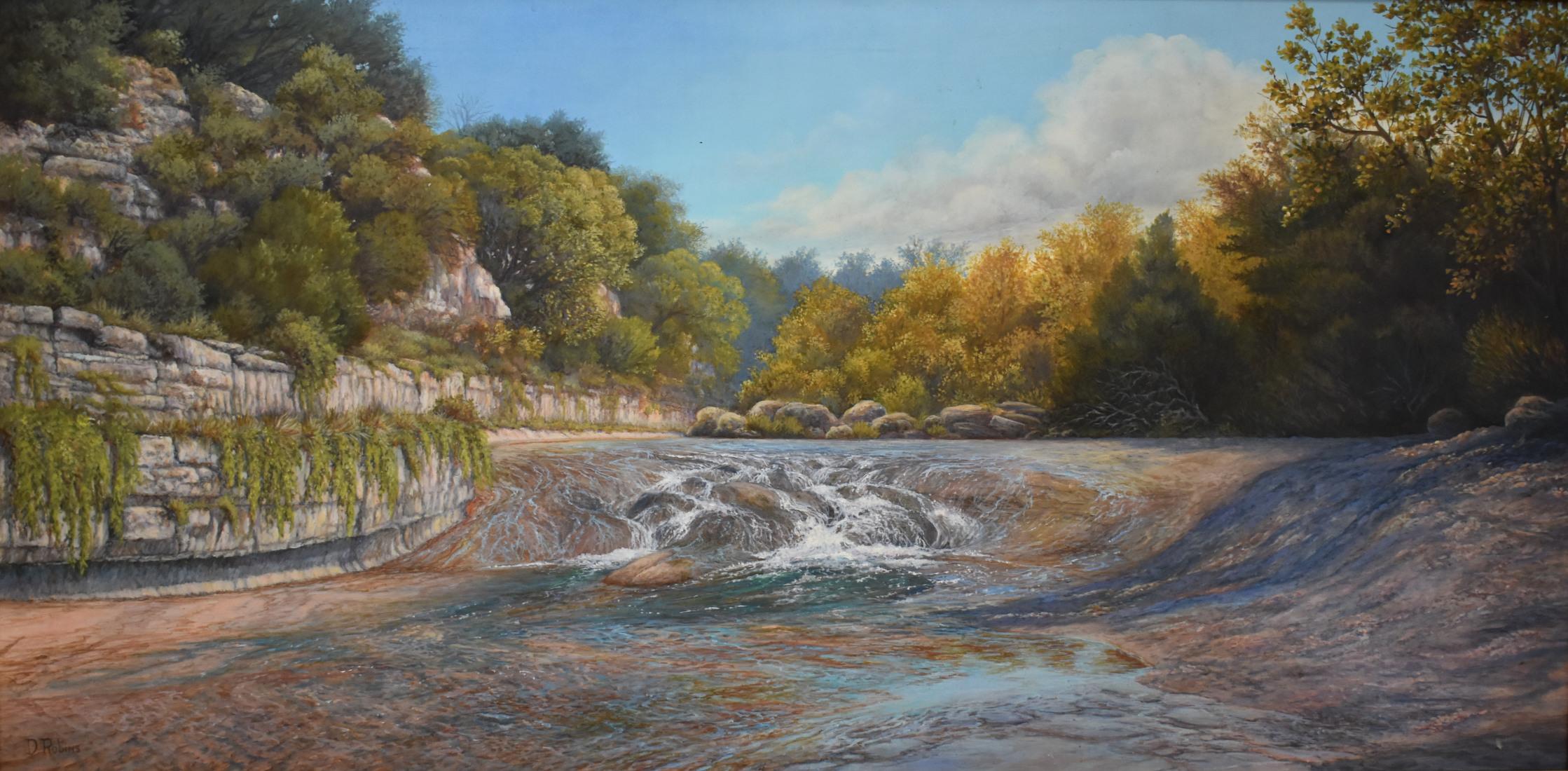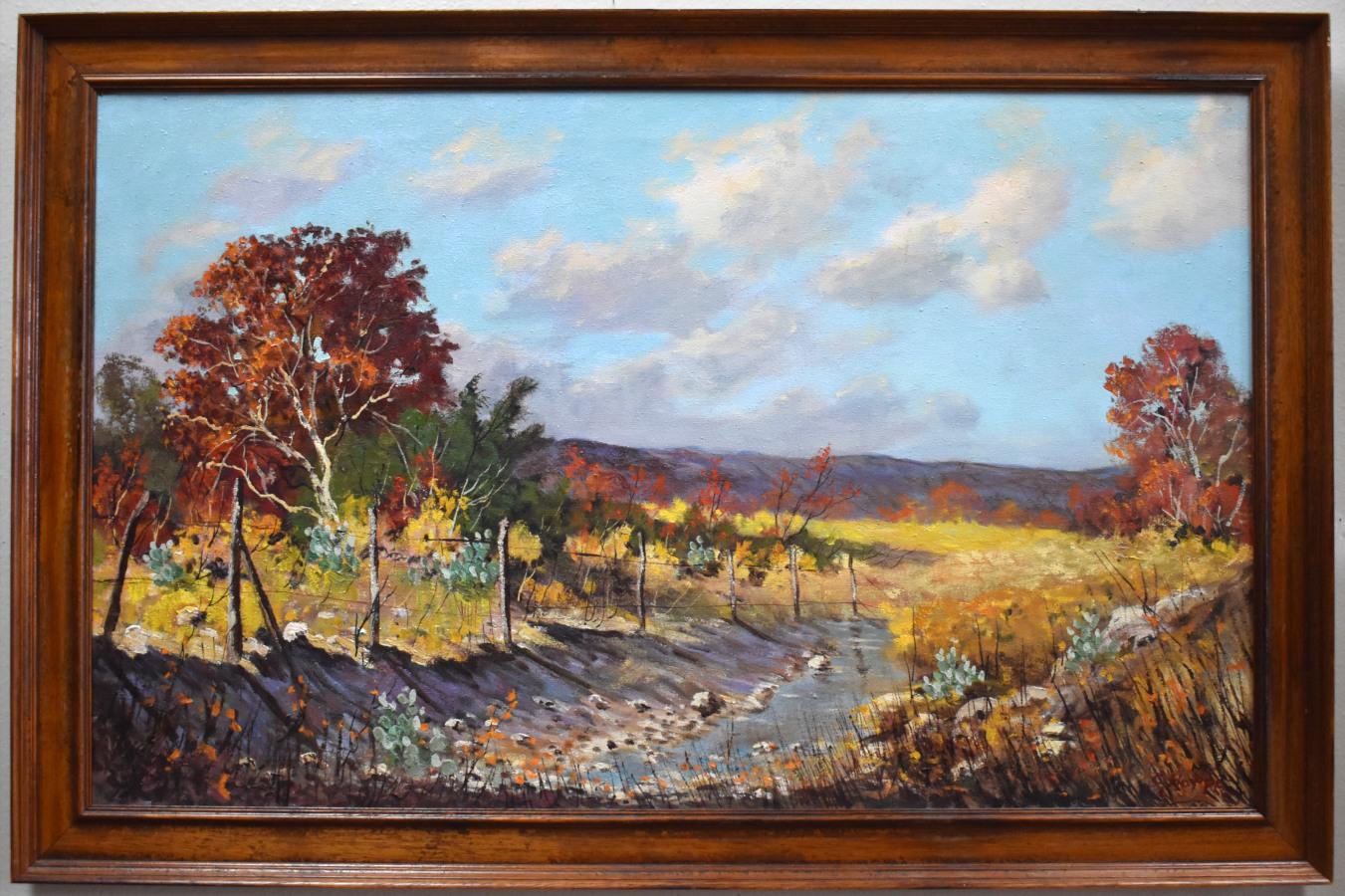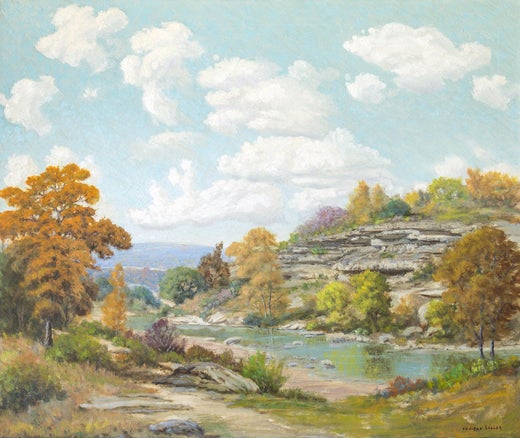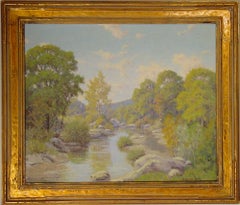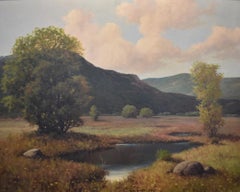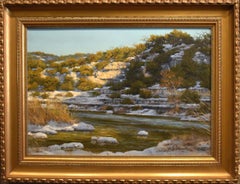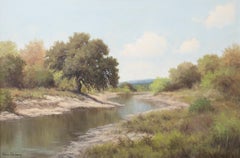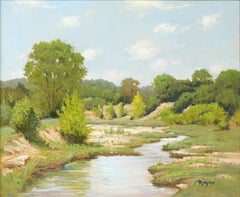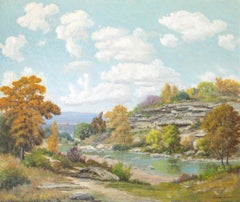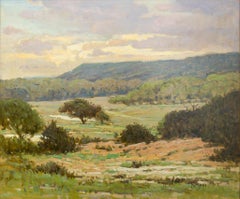Items Similar to "Onion Creek" Austin Texas
Want more images or videos?
Request additional images or videos from the seller
1 of 5
Morris Walton Leader"Onion Creek" Austin TexasCirca 1930s
Circa 1930s
$8,900
£6,761
€7,785.26
CA$12,732.35
A$13,966.16
CHF 7,201.82
MX$166,811.88
NOK 91,341.02
SEK 85,688.24
DKK 58,179.09
About the Item
Walton Leader (1877-1966)
Austin Artist Image
Size: 28 x 36 Frame Size: 34 x 41
Medium: Oil on Canvas
1930s Onion Creek Austin Texas
Biography
Walton Leader (1877-1966)
Morris Walton Leader was born in Marshall, Texas in 1877. He died in Austin, Texas where he lived since a young boy. He studied with San Antonio Artists Harry Anthony DeYoung, P.L. Hohnstedt as well as many other listed Texas Artists. He specialized in Texas Landscapes mostly near Austin. He did many creek scenes especially in the Austin Area. His paintings were exhibited at the Witte Museum in the early 1930s. He also exhibited his works in the Texas Artists Circuit Exhibition as well as many other venues.
- Creator:
- Creation Year:Circa 1930s
- Dimensions:Height: 38 in (96.52 cm)Width: 41 in (104.14 cm)Depth: 4 in (10.16 cm)
- More Editions & Sizes:Size: 28 x 36 Frame Size: 34 x 41 Price: $8,900
- Medium:
- Movement & Style:
- Period:
- Condition:Please visit our 1stdibs store front for many other goodies.
- Gallery Location:San Antonio, TX
- Reference Number:1stDibs: LU76932583163
Morris Walton Leader
Morris Walton Leader was born in Marshall, Texas in 1877. Leader studied with San Antonio Artists Harry Anthony DeYoung, P.L. Hohnstedt, as well as many other, listed Texas Artists. Leader specialized in Texas landscapes mostly near Austin. Leader did many creek scenes, especially in the Austin Area. His paintings were exhibited at the Witte Museum in the early 1930s. Leader also exhibited his works in the Texas Artists Circuit Exhibition as well as many other venues. Leader died in Austin, Texas, where he lived as a young boy.
About the Seller
5.0
Vetted Professional Seller
Every seller passes strict standards for authenticity and reliability
Established in 1974
1stDibs seller since 2017
102 sales on 1stDibs
Typical response time: 1 hour
- ShippingRetrieving quote...Shipping from: San Antonio, TX
- Return Policy
Authenticity Guarantee
In the unlikely event there’s an issue with an item’s authenticity, contact us within 1 year for a full refund. DetailsMoney-Back Guarantee
If your item is not as described, is damaged in transit, or does not arrive, contact us within 7 days for a full refund. Details24-Hour Cancellation
You have a 24-hour grace period in which to reconsider your purchase, with no questions asked.Vetted Professional Sellers
Our world-class sellers must adhere to strict standards for service and quality, maintaining the integrity of our listings.Price-Match Guarantee
If you find that a seller listed the same item for a lower price elsewhere, we’ll match it.Trusted Global Delivery
Our best-in-class carrier network provides specialized shipping options worldwide, including custom delivery.More From This Seller
View All"BARTON CREEK" AUSTIN
By Morris Walton Leader
Located in San Antonio, TX
Walton Leader
(1877-1966)
Austin Artist
Image Size: 21 X 24
Frame Size: 26 X 30
Medium: Oil
1930s / 1940s
Barton Creek
Biography
Walton Leader (1877-1966)
Morris Walton Leader was born in Marshall, Texas in 1877. He died in Austin, Texas where he lived since a young boy. He studied with San Antonio Artists Harry Anthony DeYoung...
Category
20th Century Impressionist Landscape Paintings
Materials
Oil
"Texas Hill Country Creek" A Gentle Softness is apparent in this lovely piece
By Jerry Ruthven
Located in San Antonio, TX
Jerry Ruthven (1947 - present) Austin Artist Image Size: 24 x 36 Frame Size: 32 x 44 Medium: Oil Dated 1982 "Texas Hill Country Creek"
Bio:
Jerry ...
Category
1980s Impressionist Landscape Paintings
Materials
Oil
"Hill Country Pond" Texas Hill Country
By Roland D. Enright
Located in San Antonio, TX
R.D. Enright "Hill Country Pond"
(1921 - 1983)
Texas
Image Size: 24 x 30
Frame Size: 31 x 37
Medium: Oil
Biography
R.D. Enright (1921 - 1983)
Roland...
Category
1960s Impressionist Landscape Paintings
Materials
Oil
"BEND IN THE CREEK" TEXAS HILL COUNTRY LIMESTONE BLUFFS RIVER 33 X 45 FRAMED
Located in San Antonio, TX
W. A. Slaughter
(1923 - 2003)
Dallas / San Antonio Artist
Image Size: 24 x 36
Frame Size: 33 x 45
Medium: Oil on Canvas
"Bend in the Creek" Texas Hill Country
Biography
W. A. Slaught...
Category
1970s Impressionist Landscape Paintings
Materials
Oil
"Rushing River" Texas Landscape
Located in San Antonio, TX
D. Robins
Image Size: 18 x 36
Frame Size: 24 x 42
Medium: Oil
"Rushing River"
Category
Early 20th Century American Realist Landscape Paintings
Materials
Oil
"CREEK IN LEON VALLEY" SAN ANTONIO TEXAS FRAMED 26.25 X 40.25
Located in San Antonio, TX
Carl Hoppe
1897-1981
San Antonio Artist
Image Size: 22 x 36
Frame Size: 26.25 x 40.25
Medium: Oil on Canvas
"Creek in Leon Valley"
Biography
Carl Hoppe 1897-1981
Carl Thomas Hoppe...
Category
20th Century Impressionist Landscape Paintings
Materials
Oil
You May Also Like
"Hill Country Landscape with a Creek" Texas Landscape in Summer
Located in Austin, TX
In this painting, 20th century artist Palmer Chrisman depicts a flowing Texas creek in the summer. This piece is executed in oil on canvas.
Canvas Size: 24 x 36 inches
Framed Size: 3...
Category
20th Century Landscape Paintings
Materials
Canvas, Oil
"Texas Creek" Summer Green Pastoral Landscape
By Jim Rodgers
Located in Austin, TX
This bright and sunny landscape by By Jim Rodgers features bright green trees and grasses budding in the spring on either side of a flowing creek. It was painted outside of Johnson C...
Category
21st Century and Contemporary Naturalistic Landscape Paintings
Materials
Oil, Board
"Bluff on the Creek" Rocky Texas Fall Landscape
By Morris Walton Leader
Located in Austin, TX
Artist: Morris Walton Leader (1877 - 1966)
Title: Bluff on the Creek
Size: 30" x 36"
Medium: Oil on Canvas
Signed LR "Walton Leader"
This painting by Morris Walton Leader captures a...
Category
20th Century Landscape Paintings
Materials
Canvas, Oil
"Morning in the Hill Country" Texas Landscape
By Jim Rodgers
Located in Austin, TX
Landscape painting depicting a cloudy morning in the Texas Hill Country.
By Jim Rodgers
20" x 24" Oil on Board
Category
21st Century and Contemporary Landscape Paintings
Materials
Oil, Board
"Garner State Park" Texas hill country landscape
By Daniel Maldonado
Located in Austin, TX
This Texas scene by Daniel Maldonado depicts Garner State Park, located near Concan, Texas. The piece is executed in oil on canvas and measures 16 x 20 inches.
Framed
Category
21st Century and Contemporary Contemporary Landscape Paintings
Materials
Canvas, Oil
On Comanche Hills Ranch, Texas landscape, oil painting, Texas Hill Country
By Judy Elias
Located in Houston, TX
On Comanche Hills Ranch is a Texas landscape located on a private Texas ranch. On Comanche Hills Ranch is located in the Texas Hill Countrywhere cacti and bluebonnets abound. This o...
Category
21st Century and Contemporary Impressionist Landscape Paintings
Materials
Oil
$2,240 Sale Price
36% Off
More Ways To Browse
Texas Revolution Or Alamo Paintings
Onion Vintage
Onion Painting
Lin Hongdan
Lindstrom Painting
Marthas Vineyard Painting
Moonlight Sonata
Oil City Rain
Oil Paintings Cape Cod
Oil Pastel Paintings Sunsets
Pafa Artists
Painting Germany Lake
Paintings Of Hawaii
Paris Painting Winter
Piet Oudolf
Precisionist Painting
River Landscape With Cottage
River Wye
